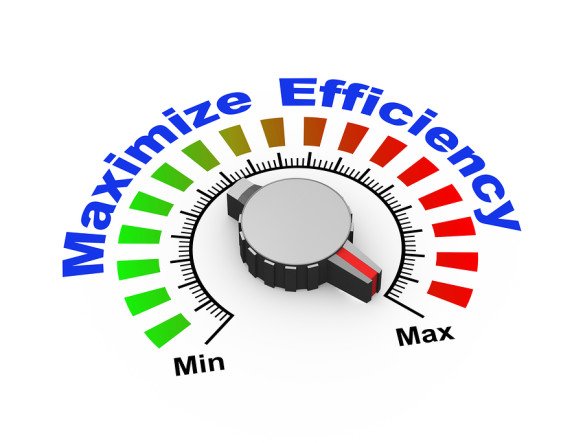3 Common Misconceptions About The Best Financial Product In Existence
johnmontoya (34) in wholelife •
Originally published on Steemit.com:(https://steemit.com/wholelife/@johnmontoya/3-common-misconceptions-of-the-best-financial-product-in-existence)
Stop me if you’ve heard this before.
“Whole Life is so expensive.”
“Whole Life takes so long to build any cash value.”
“Whole Life requires a premium every year until you die.”

Unfortunately, for so many people and their families, Whole Life insurance is probably the least understood financial product the average consumer owns. This is because very little is understood about the product Even within the industry where financial advisors and career life insurance agents are supposed to be the “experts”, there is lack of understanding of the total benefits and flexibility a Whole Life policy can provide.
As such, owning a Whole Life policy tends to be an afterthought because the general population recycles old, outdated information about Whole Life policies. Little do people know that a properly structured Whole Life policy can actually be designed and implemented for the current generation of millennials, professionals & business owners, and even retirees who are seeking a safe place to grow an asset without any luck, skill, or guesswork otherwise required with the typical investments available today.
Most people will assume all life insurance is solely about the death benefit leaving little to no conversation about the living benefits associated with Whole Life insurance policies. However, those days are gone forever thanks to the flexibility of new Whole Life products that can offer riders like the Paid-Up Additions Rider (PUAR).
This little mentioned rider is the most important rider to include if you decide to set up a Whole Life policy because it not only creates payment flexibility, but it also turbo-charges the growth of the cash value from day 1!
No more waiting years to see any substantial Cash Values in a Whole Life contract. With a Paid-Up Additions Rider, my clients start to see available Cash Value accumulate right away which they can use without restrictions and for any purpose.
No more waiting years to see any substantial Cash Values in a Whole Life contract. With a Paid-Up Additions Rider, my clients start to see available Cash Value accumulate right away which they can use without restrictions and for any purpose.
Access to Cash Value is a very unique benefit of a properly designed Whole Life policy because when taken as a policy loan, there are no tax consequences and no interruption in the growth of my clients Cash Values.
The life insurance company continues to pay guaranteed interest on Cash Values as if there are no loans allowed for uninterrupted growth. In addition, policy dividends can be paid out on anniversary date regardless of any outstanding loans helping the Cash Values to grow even faster.
The ability for my clients to grow money safely, with no tax consequences (even while they use it someplace else!) is unparalleled by any financial product in existence.

And the irony of purchasing a Whole Life policy with the inclusion of the Paid-Up Additions Rider is that this Whole Life structure is the most efficient way to own a life insurance policy.
Compare it to a term policy. After years of paying premium, 99% of term policies expire because the insured has outlived the term policy period of fixed premiums (typically 10, 20, or 30 years). All money paid as premium is gone forever making this type of policy a liability in the truest sense because there is nothing to show for it.
With a properly structured Whole Life policy designed with a Paid-Up Addtions Rider, policy owners are now building a full fledged asset that is liquid from day 1, and guaranteed to growth for the rest of their lives while also guaranteeing a legacy for loved ones.
One of the three main simple and easy concepts I teach my clients is understanding the difference between assets vs. liabilities. Owning assets like a properly designed Whole Life policy is one of the best ways to round out a portfolio of assets because it will have none of the pitfalls of a traditional investment (risk of loss, taxes, illiquidity).
And as mentioned a Whole Life policy with a Paid-Up Addtion’s Rider is extremely flexible allowing for a cushion between the minimum premium due annually on a policy and a maximum annual premium set within the policy.

Furthermore, most people think premium must be paid for life on these policies but there is little known option called Reduce Paid-Up or “RPU” for short.
Essentially what RPU does is make a one-time reduction of the permanent death benefit in the policy. This one time reduction offsets all future premium payments making the policy “Paid-Up”. And in some, if not most cases, electing the RPU option will not even reduce the death benefit because the policy will have reached a point of maturity if owned for an extended period of years.
Electing this RPU option is a popular method to finish contributing to a Whole Life policy and removes the misconception that a Whole Life policy must have a premium payment every year to keep it active.
If this article has helped you to think of Whole Life in a different way, I encourage you to seek out a professional who understands how to structure a Whole Life policy as described here.
And for a real-life example of how I structure Whole Life policy for my clients, I encourage you to visit the videos at http://www.CashValueBanking.com/.
Thank you,
John Montoya

No comments:
Post a Comment